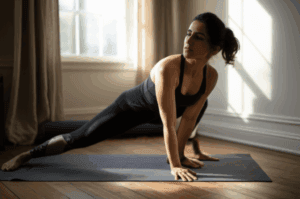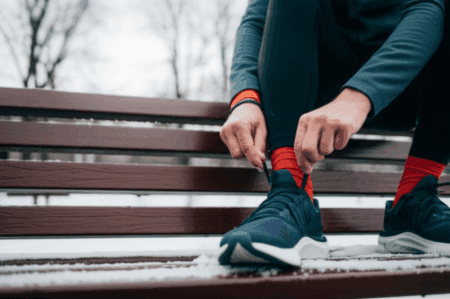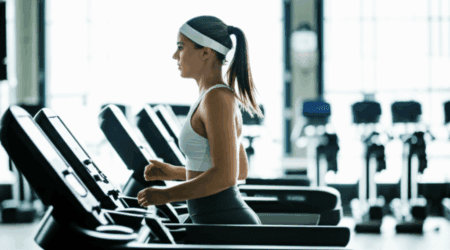Staying active is crucial as we age. While the fountain of youth remains a myth, a consistent exercise routine can significantly impact how you feel, both physically and mentally. One 92-year-old shares her secrets to feeling decades younger through a carefully crafted workout regime. And it’s never too late to start. This guide provides insights into how to begin your fitness journey in your 60s and beyond.
The Benefits of Exercise After 60
Regular physical activity offers a wide array of benefits for older adults. It’s not just about maintaining physical strength; it’s about enhancing overall well-being. Here’s a breakdown of the key advantages:
- Prevents Chronic Diseases: Exercise helps protect against illnesses such as cardiovascular disease, type 2 diabetes, and certain cancers. If you already have a chronic condition, physical activity can minimize symptoms.
- Boosts Immunity: Moderate exercise is linked to a lower risk of acute respiratory illnesses and fewer sick days. Physical activity’s anti-inflammatory effects may improve immune function.
- Improves Mental Health: Exercise can ease symptoms of anxiety and depression, increase relaxation, and create a sense of well-being. Mood-boosting benefits continue well into old age.
- Maintains Weight: Regular movement helps maintain a healthy weight, reducing the risk of obesity-related complications.
- Reduces Risk of Falls: Exercises that improve strength, balance, and flexibility can help prevent falls and injuries, promoting independence.
- Strengthens Bones: Strength training can counteract bone loss, reducing the risk of fractures and improving balance.
- Relieves Osteoarthritis Pain: Moving more can lessen the pain and stiffness associated with arthritis.
Understanding the Guidelines: How Much Exercise Do You Need?
According to the CDC, adults aged 65 and older should aim for:
- At least 150 minutes a week of moderate-intensity activity, such as brisk walking (30 minutes a day, five days a week).
- Or 75 minutes a week of vigorous-intensity activity, such as hiking, jogging, or running.
- Muscle-strengthening activities on at least two days a week.
- Activities to improve balance.
It’s important to consult with a healthcare provider before starting a new exercise program, especially if you have underlying health conditions or haven’t been active in a while. They can help you determine what is appropriate for your fitness level.
Getting Started in Your 60s: A Step-by-Step Approach
Starting an exercise routine in your 60s doesn’t have to be daunting. The key is to take it slow, listen to your body, and gradually increase the intensity and duration of your workouts. Here’s a step-by-step guide:
- Assess Your Current Fitness Level: Before jumping into any exercise program, evaluate your current physical condition. Consider factors like your strength, flexibility, balance, and any existing health issues.
- Consult with Your Doctor: Discuss your plans with your doctor, especially if you have any medical conditions or concerns. They can provide personalized recommendations and help you create a safe and effective exercise plan.
- Start Slowly: Begin with low-impact activities that are gentle on your joints, such as walking, swimming, cycling, or chair yoga. Aim for short sessions (10-15 minutes) and gradually increase the duration and intensity as you get stronger.
- Incorporate Variety: Include a mix of aerobic, strength training, flexibility, and balance exercises in your routine to target different aspects of fitness.
- Listen to Your Body: Pay attention to any pain or discomfort you experience during exercise. Stop if you feel any sharp or persistent pain, and consult with your doctor or a physical therapist if needed.
- Stay Consistent: Consistency is key to seeing results. Aim to exercise most days of the week, even if it’s just for a short period.
- Make it Enjoyable: Choose activities that you find fun and engaging to stay motivated. Consider exercising with a friend or joining a group fitness class.
Sample Workout Routine for Beginners
This sample routine includes a variety of exercises that can be modified to suit your fitness level. Remember to warm up before each workout and cool down afterward.
Aerobic Exercise
- Walking: Start with 10-15 minutes of brisk walking at a comfortable pace. Gradually increase the duration and intensity as you get fitter.
- Swimming: Swimming is a great low-impact activity that works your whole body. Aim for 20-30 minutes of swimming at a moderate pace.
- Cycling: Cycling is another excellent option for cardiovascular health. Start with 20-30 minutes of cycling on a flat surface and gradually increase the incline or distance.
Strength Training
- Chair Squats: Stand in front of a chair and slowly lower yourself down as if you’re going to sit, but stop just before your buttocks touch the seat. Keep your back straight and your core engaged. Push back up to a standing position. Repeat 10-12 times.
- Wall Push-Ups: Stand facing a wall with your hands shoulder-width apart. Lean towards the wall, bending your elbows until your chest touches the wall. Push back to a standing position. Repeat 10-12 times.
- Bicep Curls: Use light dumbbells or resistance bands to perform bicep curls. Stand with your feet shoulder-width apart and your arms at your sides. Curl the weights up towards your shoulders, keeping your elbows close to your body. Lower the weights back down slowly. Repeat 10-12 times.
- Calf Raises: Stand with your feet flat on the floor and slowly raise up onto your toes. Hold for a second and then lower back down. Repeat 10-12 times.
Flexibility and Balance
- Chair Yoga: Chair yoga is a gentle form of exercise that improves flexibility, balance, and strength. There are many chair yoga routines available online or at local community centers.
- Balance Exercises: Stand near a chair or wall for support. Try standing on one foot for 10-20 seconds at a time. You can also try walking heel-to-toe across a room.
- Stretching: Gentle stretching can improve flexibility and range of motion. Hold each stretch for 20-30 seconds. Include stretches for your neck, shoulders, back, legs, and ankles. Some effective mobility exercises include neck stretches, shoulder rolls, ankle circles, hip rotations, knee extensions, and wrist flexor and extensor stretches.
The 92-Year-Old’s Wisdom: Key Principles to Follow
While specific routines vary, certain principles are universal, gleaned from those who maintain activity into advanced age:
- Consistency is paramount: Regularity, even in small doses, yields long-term benefits.
- Listen to your body: Adjust intensity and duration based on how you feel.
- Find joy in movement: Choose activities you genuinely enjoy to sustain motivation.
- Socialize: Exercise with friends or in groups for added motivation and enjoyment.
- Stay hydrated: Drink plenty of water before, during, and after exercise.
- Prioritize rest: Allow your body adequate time to recover between workouts.
Adapting the Routine
As you progress, it is important to adapt the exercise to your fitness level. Here are some options:
- Increase the duration: Gradually increase the amount of time you exercise.
- Increase the intensity: As exercises become easier, try adding resistance bands or light weights.
- Modify exercises: If a certain exercise is too difficult, try a modified version. For example, instead of doing a full push-up, you can do a wall push-up or a knee push-up.
- Try new activities: Once you have a solid foundation, try new activities to keep things interesting and challenge your body in different ways.
Safety Considerations
Safety should always be a top priority when exercising, especially for older adults. Here are some important safety tips to keep in mind:
- Warm-up before exercise and cool down afterward.
- Wear appropriate clothing and footwear.
- Exercise in a safe environment.
- Avoid exercising in extreme heat or cold.
- Stay hydrated.
- Know your limits and don’t push yourself too hard.
- Listen to your body and stop if you feel any pain.
Staying Motivated
Maintaining motivation can be challenging, but here are a few tips to help you stay on track:
- Set realistic goals.
- Track your progress.
- Reward yourself for reaching milestones.
- Find an exercise buddy.
- Join a fitness class or group.
- Make exercise a part of your daily routine.
- Focus on the benefits of exercise.
Incorporating regular exercise into your life after 60 is a powerful way to improve your physical and mental health, maintain your independence, and enhance your overall quality of life. By starting slowly, listening to your body, and staying consistent, you can achieve your fitness goals and enjoy a healthier, more active future.







